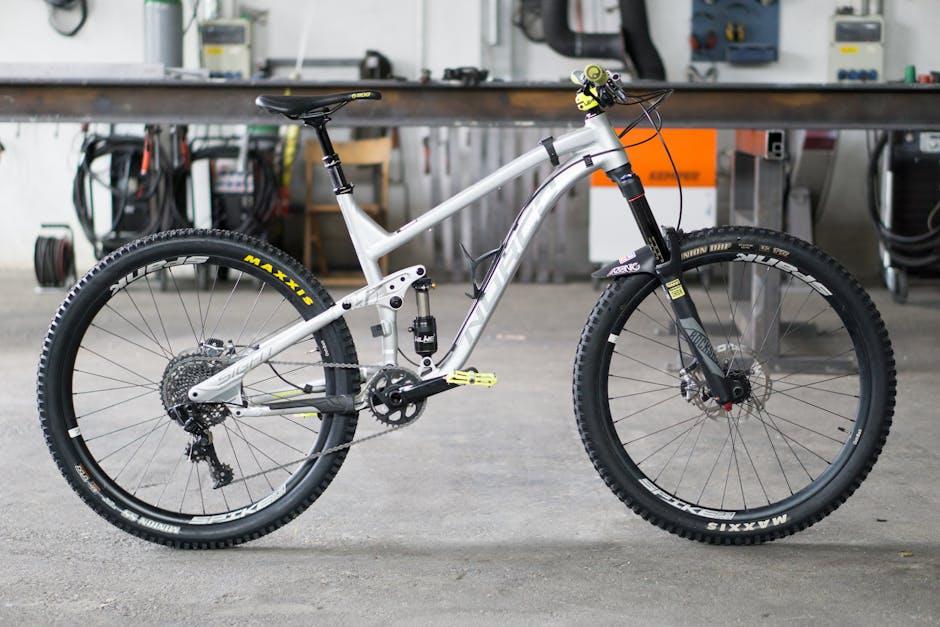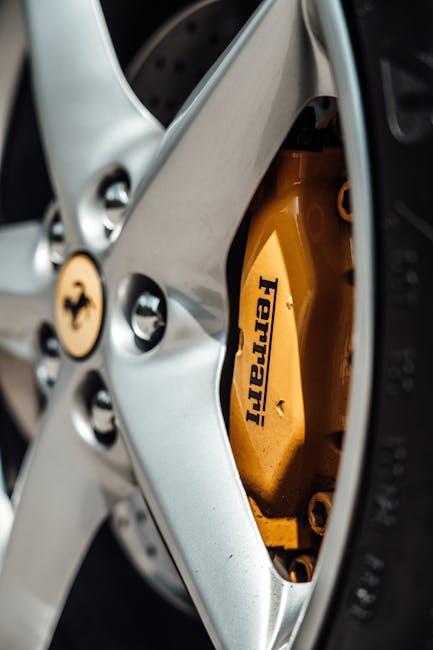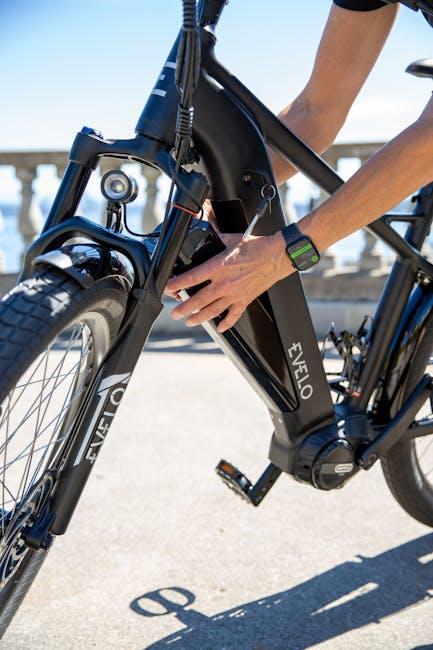Imagine pressing down on your brake pedal, expecting a steady response, only to feel an unsettling shudder underfoot. This unexpected vibration can turn an otherwise routine drive into a moment of concern and curiosity. What lies beneath this tremor? The causes of brake pedal vibration are as varied as they are important to understand, ranging from simple wear and tear to deeper mechanical issues. In this article, we’ll peel back the layers to explore why your brake pedal might be shaking and what that means for your vehicle’s safety and performance.
Table of Contents
- Understanding the Mechanics Behind Brake Pedal Vibration
- Common Sources of Brake Rotor Issues and How They Affect Performance
- The Role of Brake Pad Wear in Causing Pulsation
- How Suspension and Wheel Alignment Contribute to Brake Shudder
- Diagnosing Brake System Imbalances for Accurate Repairs
- Practical Maintenance Tips to Prevent Brake Pedal Vibration
- Q&A
- Final Thoughts

Understanding the Mechanics Behind Brake Pedal Vibration
When you press the brake pedal and feel a pulsating or shaking sensation, it usually signals an underlying issue within the braking system’s mechanical components. The vibration is often caused by the uneven contact between the brake pads and rotors, where surface irregularities or wear patterns disrupt smooth friction. Another frequent culprit is the warping of brake rotors, which happens due to excessive heat generation during braking cycles. This warping creates an imbalance, causing the pedal to vibrate rhythmically as the brake pads hit raised or lowered spots on the rotor surface.
Several other factors contribute to this phenomenon, such as:
- Loose or worn suspension components that affect braking stability
- Imbalanced tires transmitting vibrations up through the chassis
- Improperly torqued lug nuts leading to wheel misalignment
- Contaminated brake fluid affecting hydraulic pressure consistency
| Cause | Effect | Repair Insight |
|---|---|---|
| Warped rotors | Pulsating pedal | Resurface or replace rotors |
| Uneven pad wear | Vibration during braking | Replace brake pads |
| Loose suspension | Unstable braking feel | Tighten/replace components |
| Contaminated fluid | Inconsistent pedal resistance | Flush brake fluid |

Common Sources of Brake Rotor Issues and How They Affect Performance
One of the primary culprits behind brake pedal vibration stems from warped rotors. When the rotors become uneven due to excessive heat or wear, the brake pads cannot maintain consistent contact, resulting in an oscillating sensation felt through the pedal. Additionally, uneven brake pad wear or contamination with debris can cause inconsistent friction, amplifying the vibration and reducing braking efficiency. Over time, rotor surface irregularities exacerbate this issue, diminishing smooth pedal response and making it difficult to control the vehicle during braking.
Other common sources include improper installation and loose components. If rotors or pads are installed incorrectly or components like calipers and lug nuts aren’t tightened properly, it can lead to rotor misalignment or flapping. These mechanical imbalances translate directly into a pulsating pedal feel. Brake system contamination, such as rust or dust buildup on the rotors, further worsens performance by interrupting the braking surface’s uniformity. Addressing these problems early not only eliminates pedal vibrations but also restores optimal stopping power and extends the life of your brake system.

The Role of Brake Pad Wear in Causing Pulsation
Uneven brake pad wear is a common culprit behind that frustrating pulsation you feel in your brake pedal. As the pads deteriorate unevenly, the contact surface between the pad and rotor becomes inconsistent, causing slight vibrations each time the brakes are applied. This inconsistency leads to a rhythmic sensation that mimics the pedal pushing back against your foot—a clear signal that it’s time for an inspection or replacement of your brake pads.
Several factors contribute to this uneven wear, including:
- Misalignment of brake calipers
- Accumulation of debris or rust on rotors
- Using low-quality or incompatible brake pads
- Overheating during aggressive or prolonged braking
Ignoring the signs of brake pad wear not only exacerbates pedal vibration but can also cause damage to the rotors, leading to more expensive repairs. Maintaining even pad wear is essential for smooth braking performance and pedal stability.

How Suspension and Wheel Alignment Contribute to Brake Shudder
When your vehicle’s suspension components are out of sync, they can directly influence the braking experience. Worn-out shocks or struts fail to absorb the forces generated during braking, causing the chassis to vibrate and transmit that motion through the brake pedal. Similarly, loose or damaged suspension bushings create unstable contact between the wheels and the road surface. This instability disrupts the smooth engagement of the brake rotors and pads, resulting in that distinctive shudder you feel with every press of the pedal.
Wheel alignment also plays a subtle but critical role. Misaligned wheels create uneven tire-to-road contact, which not only increases tire wear but also causes rotational imbalances as the wheels spin. These imbalances force the brake rotors into an uneven grip, triggering pulsation in the brake pedal. Proper alignment ensures that the wheels track straight and true, helping maintain consistent brake pressure and preventing premature vibration issues.
- Worn suspension parts: Shocks, struts, bushings
- Misaligned wheels: Toe, camber, caster angles
- Uneven tire wear: Causes imbalance during braking
| Component | Effect on Brake Shudder | Maintenance Tip |
|---|---|---|
| Shocks & Struts | Reduced shock absorption, vibration transfer | Replace every 50,000 miles or when leaking |
| Suspension Bushings | Instability causing uneven brake grip | Inspect annually for cracks and wear |
| Wheel Alignment | Uneven tire contact causing pedal pulsation | Align wheels during tire changes or suspension repair |

Diagnosing Brake System Imbalances for Accurate Repairs
When addressing issues related to uneven braking, pinpointing the root cause of brake pedal vibration is essential for effective and lasting repairs. Imbalances often stem from discrepancies in brake pad wear, rotor thickness, or caliper function. A thorough inspection using precision tools such as micrometers and dial indicators can reveal subtle differences in rotor thickness or warping that are not immediately visible. Additionally, tire and suspension components should be evaluated since worn parts can amplify vibration signals transmitted through the braking system, complicating the diagnostic process.
Technicians can systematically approach diagnosis by considering several critical factors, including:
- Rotor condition: Checking for runout and surface irregularities.
- Pad wear patterns: Identifying uneven material loss that suggests caliper problems.
- Caliper operation: Ensuring proper piston movement and slide pin lubrication.
- Wheel alignment and balancing: Confirming that the vibration isn’t amplified by unrelated drivetrain issues.
| Component | Common Issue | Effect on Braking |
|---|---|---|
| Brake Rotor | Warping | Uneven pedal vibration |
| Brake Pads | Uneven wear | Pulsating brake feel |
| Calipers | Seized piston | Unequal brake force |
| Wheels | Imbalance | Amplified vibration during braking |

Practical Maintenance Tips to Prevent Brake Pedal Vibration
Keeping your brake system in top shape doesn’t have to be complicated. Start by regularly checking the brake pads and rotors for uneven wear, which is often the primary culprit behind that unsettling pedal vibration. Ensure your brake rotors are properly resurfaced or replaced if they’re warped; even slight imperfections in the rotor surface can translate into significant pedal pulsation. Additionally, verify that the brake calipers are sliding smoothly and aren’t sticking, as seized calipers can cause uneven brake pressure and vibration.
Adopting a proactive maintenance routine can make all the difference. Here are some easy yet effective steps to keep vibrations at bay:
- Regularly bleed the brake lines: Air trapped in the system reduces braking efficiency and causes uneven pedal pressure.
- Keep wheel lug nuts tightened to manufacturer specs: Loose wheels transmit vibrations directly to the pedal.
- Inspect tire balance and alignment: Worn or unbalanced tires can mimic brake-related vibration symptoms.
- Use quality brake components: Cheap or incompatible parts often wear faster and contribute to performance issues.
| Maintenance Task | Recommended Frequency | Impact on Brake Vibration |
|---|---|---|
| Brake Pad Inspection | Every 10,000 miles | High |
| Rotor Resurfacing/Replacement | As needed/Every 30,000 miles | Very High |
| Brake Line Bleeding | Annually or when replacing fluid | Medium |
| Wheel Lug Nut Tightening | After tire changes | Medium |
| Tire Balancing | Every tire rotation | Medium |
Q&A
Q:
A: Brake pedal vibration usually occurs when there is an uneven surface in the braking system that comes into contact during stopping. This unevenness causes the brakes to grab inconsistently, sending a pulsating sensation through the pedal.
Q: Is brake pedal vibration a sign of a serious problem?
A: Often, yes. While mild vibrations can sometimes be harmless, persistent or intense pulsations typically indicate underlying issues like warped brake rotors or worn-out components that should be inspected promptly.
Q: How do warped brake rotors cause pedal vibration?
A: Brake rotors work like the spinning discs your pads clamp down on to stop your car. If these discs become warped due to heat or wear, the pads hit uneven spots each rotation, translating into a rhythmic shake felt in the pedal.
Q: Can uneven brake pad wear lead to vibration?
A: Absolutely. When brake pads wear unevenly, they don’t apply uniform pressure on the rotors, resulting in inconsistent contact and vibrations that pulse through the pedal during braking.
Q: Are there other parts besides rotors and pads that can trigger this vibration?
A: Yes. Problems with wheel bearings, suspension components, or even tires can cause irregular forces during braking, which might be experienced as pedal vibration.
Q: How can I diagnose brake pedal vibration myself?
A: While a professional inspection is best, you might notice vibration intensity changes at different speeds or braking levels. If the vibration grows worse when braking from high speeds or is accompanied by noises, it’s a strong clue pointing to brake issues.
Q: What should I do if my brake pedal vibrates?
A: The safest step is scheduling a brake system check with a trusted mechanic. They can measure rotor thickness, check pad condition, and inspect related components to identify and fix the source of the vibrations.
Q: Can regular brake maintenance prevent pedal vibration?
A: Definitely. Keeping rotors resurfaced or replaced as needed, rotating brake pads, and addressing wear early can maintain smooth braking performance and reduce the chance of vibrations.
Final Thoughts
In the intricate dance between machine and motion, the brake pedal’s subtle tremble serves as a quiet warning—a reminder that even the most reliable systems can falter. Understanding the root causes of brake pedal vibration not only sharpens your awareness but also empowers you to take timely action, ensuring every stop is as smooth as it is safe. So next time your brake pedal quivers, remember: it’s more than a mere shake—it’s your vehicle’s way of asking for attention. Listen closely, and you’ll keep your journeys steady and secure.
